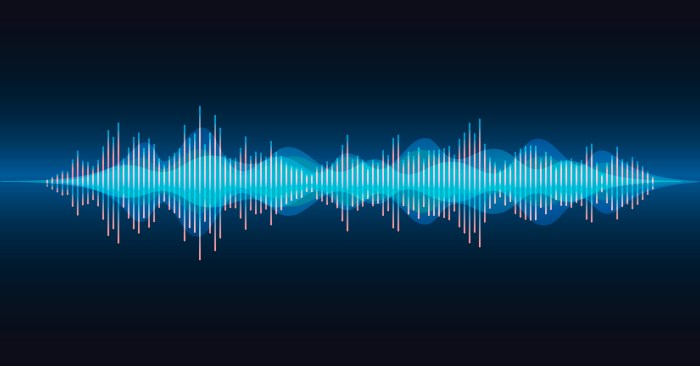How Voice AI Is Changing Home Automation is a transformative journey that redefines how we interact with our living spaces. With the rise of voice-activated technologies, homeowners are finding convenience and efficiency at their fingertips. From smart speakers to integrated home systems, voice AI has evolved significantly, making everyday tasks simpler and more accessible for everyone.
This innovation has not only streamlined daily routines but also enhanced energy efficiency and accessibility for individuals with disabilities. As we delve deeper into the world of voice AI in home automation, we’ll explore its benefits, key features, security considerations, and future trends that promise to reshape our environments.
Introduction to Voice AI in Home Automation
Voice AI, or Voice Artificial Intelligence, refers to technology that enables devices to understand and respond to human speech. It plays a pivotal role in home automation, allowing users to control various smart devices through simple voice commands. This technology has evolved significantly over the years, shifting from rudimentary voice recognition systems to advanced AI-driven platforms capable of performing complex tasks. Popular voice AI systems such as Amazon Alexa, Google Assistant, and Apple Siri have revolutionized how we interact with our homes, making everyday tasks more convenient and efficient.
Evolution of Voice AI Technology
The journey of voice AI technology has been remarkable. Initially, voice recognition systems were basic and limited, requiring users to speak in specific phrases or commands. Over time, advancements in natural language processing (NLP) and machine learning have enabled voice AI to understand context, nuances, and even accents. For instance, the introduction of neural networks has greatly enhanced the accuracy of speech recognition, allowing systems to learn and adapt to individual user preferences. Today, voice AI can manage home automation tasks, such as adjusting lighting, controlling thermostats, and even managing home security systems through conversational interactions.
Popular Voice AI Systems
Several voice AI systems have gained prominence in home automation, including:
- Amazon Alexa: Known for its versatility, Alexa can control a wide range of smart home devices and provide information on demand.
- Google Assistant: This system offers robust integration with Google services, making it a powerful tool for managing tasks and controlling smart devices.
- Apple Siri: Leveraging Apple’s ecosystem, Siri provides seamless control over iOS devices and integrates well with HomeKit-enabled smart home products.
Benefits of Voice AI in Home Automation

Voice AI technology brings numerous benefits to home automation, enhancing user experience and efficiency in daily tasks. Its ability to simplify interactions and improve accessibility significantly contributes to its popularity among consumers.
Convenience for Home Users
One of the most significant advantages of voice AI in home automation is the unparalleled convenience it offers. Users can effortlessly control their home devices without the need for physical interaction. This hands-free approach is particularly beneficial when multitasking, such as cooking or cleaning.
Energy Efficiency

Voice AI also plays a crucial role in enhancing energy efficiency within homes. By integrating with smart thermostats and lighting systems, voice AI can optimize energy usage based on user preferences and behaviors. For example, users can set schedules or adjust settings verbally to reduce energy consumption while maintaining comfort.
Accessibility Features
Voice AI technology greatly improves accessibility for individuals with disabilities. By enabling hands-free control of various devices, voice AI allows users with mobility challenges to manage their home environment independently. Features like speech-to-text and personalized voice commands further enhance usability for those with special needs.
Key Features of Voice AI Technologies
Modern voice AI systems are equipped with several key features that enhance their functionality and user experience. Understanding these capabilities can help users maximize the potential of their voice AI devices.
Voice Recognition Capabilities
Advanced voice recognition capabilities allow voice AI systems to accurately interpret commands from different users. This includes understanding diverse accents, dialects, and even background noise, ensuring reliable performance in various settings.
Integration with Smart Home Devices
Voice AI seamlessly integrates with an array of smart home devices, creating a cohesive ecosystem. This interoperability enables users to control lighting, heating, security cameras, and more, all through centralized voice commands.
Learning and Adaptation
Modern voice AI systems are designed to learn and adapt to user preferences over time. By analyzing interactions and usage patterns, these systems can provide personalized experiences, such as suggesting routines or automating repetitive tasks based on user behavior.
Security Considerations in Voice AI Home Automation
While voice AI brings numerous benefits, it also raises important security concerns that users should be aware of. Understanding these risks and adopting best practices can help ensure a secure home automation environment.
Potential Security Risks
Voice-activated devices can be vulnerable to unauthorized access, which poses a significant security risk. Potential threats include voice spoofing, where an attacker mimics a user’s voice to gain control of devices, and hacking attempts to exploit vulnerabilities in the system.
Securing Voice AI Systems
To secure voice AI systems against unauthorized access, users should implement various measures, such as enabling voice recognition features that require specific voice profiles or creating complex passphrases for sensitive commands. Regularly updating software and firmware can also help protect against known vulnerabilities.
Maintaining Privacy
Best practices for maintaining privacy while using voice AI include disabling the microphone when not in use, reviewing privacy settings regularly, and being mindful of the information shared with voice assistants. Users should ensure they are aware of how their data is being used and stored.
Future Trends in Voice AI and Home Automation
The future of voice AI in home automation is promising, with several trends poised to shape its evolution. As technology continues to advance, users can expect enhanced experiences and capabilities.
Advancements in Technology
Future advancements in voice AI are likely to include improved contextual understanding and predictive analytics, enabling systems to anticipate user needs based on historical interactions. This could result in more proactive home automation, where devices adjust settings automatically for optimal comfort and efficiency.
Integration with Emerging Technologies
The potential for voice AI to integrate with emerging smart home technologies, such as IoT devices and AI-driven security systems, will further enhance home automation capabilities. This integration will create a more connected and responsive home environment.
Impact of Machine Learning
Machine learning will play a crucial role in the future of voice AI, allowing systems to analyze data patterns and improve their performance continuously. As machine learning algorithms evolve, voice AI will become more sophisticated in understanding user preferences and adapting to individual lifestyles.
Case Studies of Voice AI Implementations: How Voice AI Is Changing Home Automation
Several homes have effectively harnessed the power of voice AI for automation, showcasing its capabilities in real-world scenarios.
Examples of Successful Implementations
Case studies demonstrate how voice AI can streamline daily routines and enhance living environments. For instance, a family might use Alexa to manage home lighting and temperature settings, creating personalized comfort levels based on time of day or family activities.
User Testimonials
User testimonials highlight their experiences with voice AI technology, often emphasizing ease of use and the joy of automation. Many users report that voice AI has simplified their lives, allowing them to focus on more important tasks while their smart home devices work seamlessly in the background.
Comparative Analysis of Platforms, How Voice AI Is Changing Home Automation
Analyzing user experiences across various voice AI platforms reveals differences in functionality, integration capabilities, and ease of use. For example, while some users prefer Google Assistant for its robust search capabilities, others appreciate Alexa’s extensive compatibility with smart home devices.
Design and Setup of Voice AI Systems
Setting up a voice AI device is straightforward, but proper configuration ensures optimal performance and usability.
Step-by-Step Setup Guide
To set up a voice AI device, follow these steps:
- Choose a suitable location for your voice AI device, ensuring it’s centrally located for optimal voice recognition.
- Download the corresponding app for your voice AI system on your smartphone or tablet.
- Follow the app’s instructions to connect the device to your Wi-Fi network.
- Integrate your smart home devices through the app for centralized control.
- Customize your settings, including voice recognition and privacy options.
Configuration Options
Voice AI systems offer various configuration options, allowing users to customize functionalities to meet their needs. This includes setting preferred wake words, adjusting volume levels, and managing device integrations for a tailored experience.
Troubleshooting Common Issues
Common voice AI issues may include connectivity problems, unresponsive devices, or misinterpretation of commands. Users can troubleshoot these issues by ensuring the device is connected to Wi-Fi, restarting the device, or recalibrating voice recognition settings.
Voice AI and Home Automation Market
The voice AI market for home automation is rapidly evolving, reflecting growing consumer demand and technological advancements.
Current Market Trends
Trends show a steady increase in the adoption of voice AI products among consumers, driven by the rising popularity of smart home devices and the desire for convenient, hands-free control. The integration of voice AI into new devices is becoming a standard feature rather than an optional add-on.
Key Players in the Industry
Key players in the voice AI market include major tech companies like Amazon, Google, and Apple, each contributing unique innovations and products that enhance the user experience in home automation.
Growth Projections
Projections indicate significant growth in the voice AI market over the next few years, fueled by advancements in technology and the increasing prevalence of smart home ecosystems. Analysts predict that the integration of voice AI will become commonplace, reshaping how consumers interact with their homes.
Outcome Summary

In summary, the integration of voice AI into home automation is a game-changer that offers unmatched convenience and adaptability. As technology advances, we can expect even more innovative solutions that will elevate how we manage our homes. Embracing these changes not only enhances our lifestyles but also paves the way for a more connected and intelligent future.